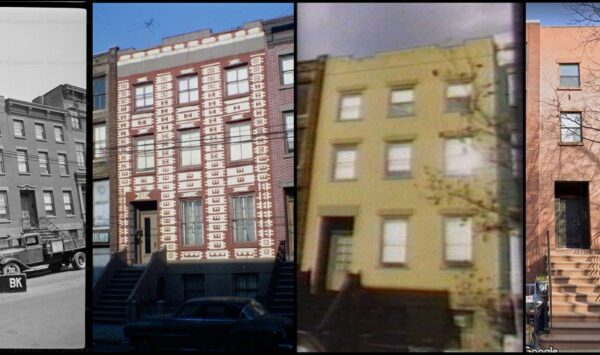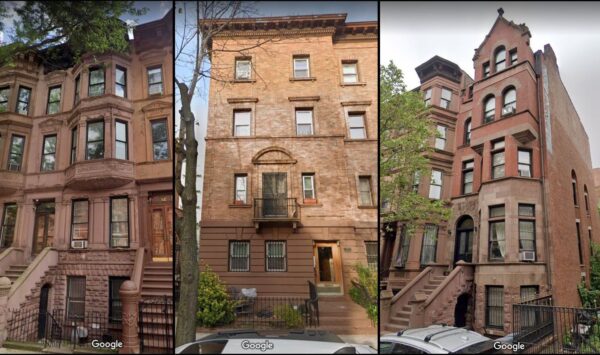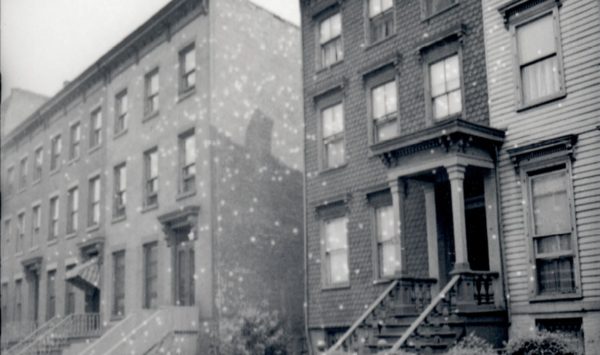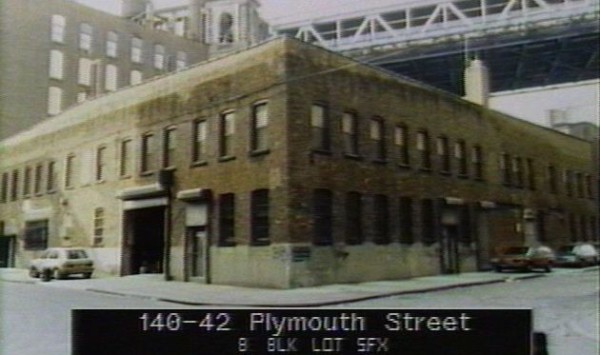THE PAINTED LADY OF SACKETT STREET (1958)

******************************************************************************************************************************** Brownstone Detectives investigates the history of our clients’ homes. The story you are about to read was composed from research conducted in the course of one of those investigations. Do you know the history of YOUR house? ******************************************************************************************************************************** Houses as old as the historic brownstones of New York City have had a lot of time to experience change – change of ownership, change of status, as well as physical change. Much of that change often occurs on the inside of these buildings as their occupancy type changes. The most prevalent change of this type that occurs over time is the change of a property from a single family house to a mutiple dwelling or boarding house. Just outside the Cobble Hill Historic District, sits a much-altered brownstone on Sackett Street between Court and Clinton Streets, No. 275. Constructed pre-1855 as a one-family house it would experience many change over the years. Its original address was No. 160. Its original owner appears to have been William H Perry, a stock broker on Wall Street. By the 1860s, the Forsyth family lived in the Sackett Street rowhouse. Orlando Forsyth was a jeweler who, in the 1840s, had had a showroom on Fulton Street at No. 99. The house would begin taking boarders in the 1870s, continuing at least through most of the 20th century. THE LADY GETS A FACELIFT At face, however, the physical changes of No. 275 seem to be the most striking. While, in its original state, it resembled […]
THE HARLEM BROWNSTONE LOTTERY (1982)

******************************************************************************************************************************** Brownstone Detectives investigates the history of our clients’ homes. The story you are about to read was composed from research conducted in the course of one of those investigations. Do you know the history of YOUR house? ******************************************************************************************************************************** In 1981, New York City felt it could no longer wait for gentrification to arrive in Harlem. The city’s finances were bleeding revenues through the decade-long erosion of its tax-paying property base. There were so many foreclosed brownstones on the city’s delinquency rolls that the earth beneath those structures had literally begun to lie fallow. And the City, as the owner of more than half of Harlem’s brownstone stock at this point (which included about 300 brownstones), was looking for ways to staunch the bleeding and bring its brownstone patients back from the brink of an eternal abyss. It was thus that, in an attempt to return that life’s blood to these lifeless patients, the City decided to find an innovative way to put owners back into Harlem’s glorious but abandoned and deteriorating brownstones. They held a lottery. THE HARLEM BROWNSTONE LOTTERY Settling upon a lottery as the means of distributing the old brownstones to middle-class Harlem families, the city’s housing department announced an application plan. The City would accept applications from (mostly) Harlem residents who had an annual income of at least $20,000. Each applicant would have a chance to buy – at a steep discount – one of 12 Harlem brownstones. City officials decided to fix the prices of […]
HAPPY BIRTHDAY, NEW YORK, NEW YORK! (1985)

******************************************************************************************************************************** Brownstone Detectives investigates the history of our clients’ homes. The story you are about to read was composed from research conducted in the course of one of those investigations. Do you know the history of YOUR house? ******************************************************************************************************************************** Start spreading the news! Exactly 35 years ago today (7 February 1985), Frank Sinatra’s “New York, New York” became the official anthem of “the city that never sleeps”! According to the New York Times (the official record of New York City) it was Mayor Ed Koch who proclaimed (but not through an official “proclamation”) the tune to be New York City’s official song. In a 22 February 2017 article, the Times wrote: Today the song is often paired with last call at a tavern, or the final strikeout of a Yankees game, and when it was belted out by Sinatra in 1978 at Radio City Music Hall, it instantly resonated with audiences, said James Kaplan, author of “Sinatra: The Chairman.” “Sinatra alchemized the bombast, the recalcitrant, yes, even boastful, up-all-night spirit of the city itself,” Mr. Kaplan said. While Ol’ Blue Eyes made it an anthem, it wasn’t always Frank’s tune. Written by the songwriting team of John Kander and Fred Ebb (the men behind the musicals “Cabaret” and “Chicago”), the song was first performed by Liza Minnelli in Martin Scorsese’s 1977 film “New York, New York.” “But when Sinatra heard it, he took an instant liking to it,” Mr. Kaplan said, “and when Sinatra performed the song, he conveyed its emotional […]
THE “GOODFELLAS” OF CUMBERLAND STREET

One of the Brownstone Detectives’ first House History Books, No. 231 Cumberland Street: The Story of a House, tells the story of an 1852 antebellum frame home just steps from Fort Greene Park. It’s an action-packed tome, replete with treachery, “poudrette,” “small art,” SROs, and the gangland figures from “Goodfellas.” Here is a brief timeline of the history of this single landmarked property, matched up with “spreads” from the book: THE HISTORY OF A BROOKLYN HOUSE The land beneath which No. 231 would someday rise, started out as a tobacco farm owned by the first Italian immigrant to New York, Pietre Cesare Alberti. The farmland would eventually be built upon in 1851-2, when builder John Ross constructed a row of three homes there. First owned by a woman with a tragic history, a melodrama involving treachery, another man, and an infant daughter – which became the gossip of the newspapers of the time – No. 231 was rented out throughout the the 1850s and 1860s, in addition to many returning Civil War veterans, to merchants and their small families. One of those merchants featured prominently in the founding of the Lafayette Avenue Presbytery Church. Before this, however, he had begun his interesting career as a Night Soil Man – starting a company which, amongst other “agricultural” endeavors, collected human excrement from the backyard privvies of Brooklyn, selling this “compost” to Long Island farmers as the appropriately – if euphemistically – named “poudrette.” The property was then owned by an immigrant, […]
YOUR BROOKLYN BROWNSTONE – IN THE ’80s

Ever wonder what your home looked like in the 1980s? Do you know if that drive-way was recently installed at your house? Do you lie awake at nights wondering when your iron gate was stolen? All of these answers to the riddles and mysteries of your Brooklyn Brownstone may lie at the NYC Department of Records. TAX PHOTOS Sometime in the 1980s city government workers went around the city snapping photographs of every house, building, and lot to update or establish a baseline for the Department of Finance’s tax records. They were known then – and now – as “tax photos.” According to the department’s website, 262,624 images exist in their online gallery: “By the early 1980s, the Department of Finance determined that the 1939/40 photographs were too out-dated for property tax appraisal purposes. From 1983 to 1988, using 35mm cameras, they photographed every property in the five boroughs, including vacant lots and tax-exempt buildings. They used color film stock producing over 800,000 photographs in both print and negative formats. Taking advantage of then-new technology ca. 1989, they recorded each print as a single frame on Laser Video Disks (LVDs), using analog video capture. The Archives extracted low-resolution tiffs of each frame from the LVDs for viewing in the gallery. High-resolution scans or prints can be ordered from the original negatives.” HOW TO GET YOUR OWN FRAMEABLE TAX PHOTOS This was one of the first things that I did after buying my house. And it is easy to do. Check […]